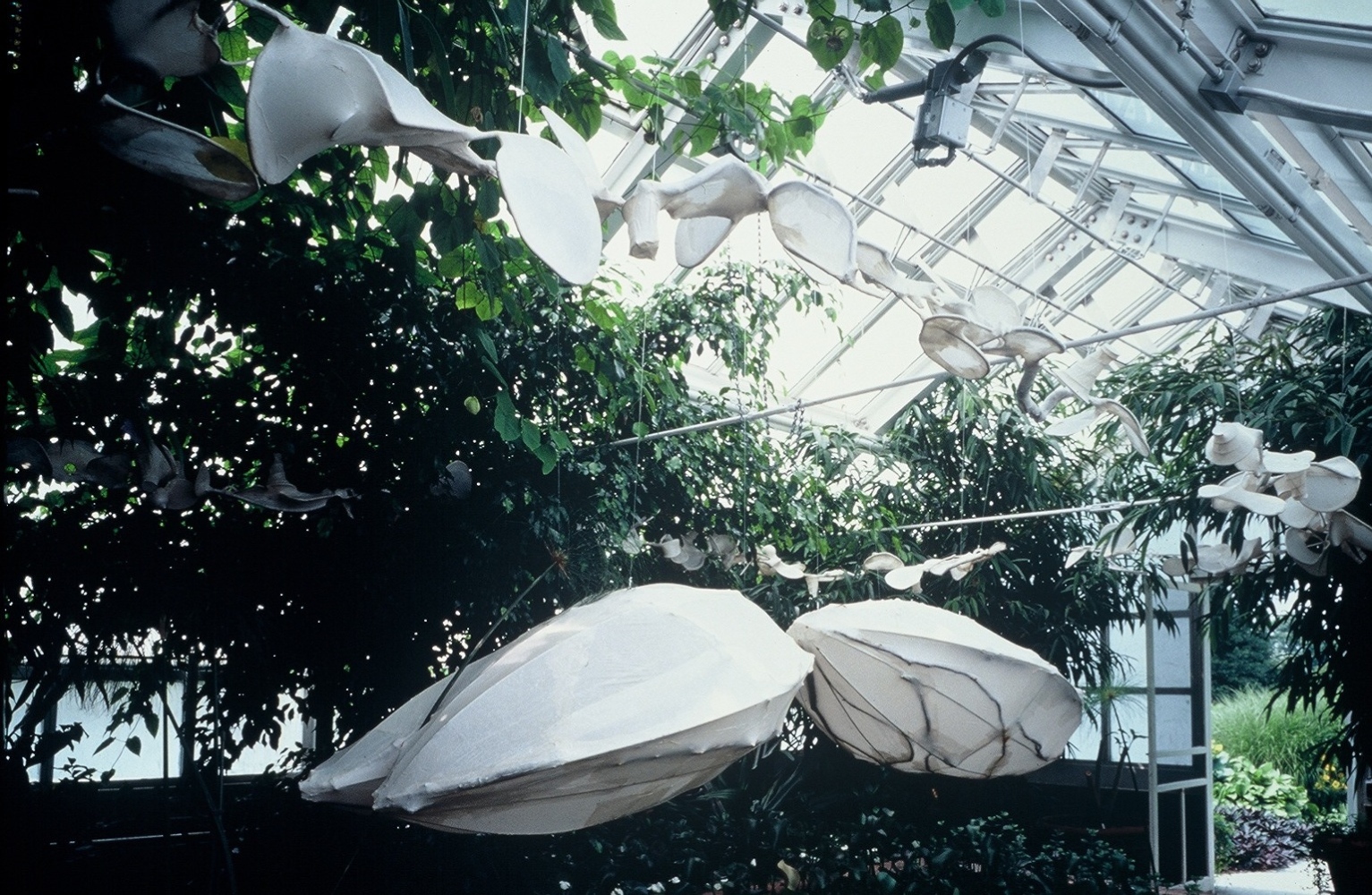installations
Only Connect
Only Connect, 1996, An installation for the Staten Island Botanical Garden at Snug Harbor
Wire, vines, garden tools and handmade paper.
Only Connect was made in collaboration with Dieu Donné
----------------------------------------------------------------
"Only connect the prose and the passion, and both will be exalted, and human love will be seen at its height. Live in fragments no longer. Only connect, and the beast and the monk, robbed of the isolation that is life to either, will die."
from Howards End, by E.M. Forster
------------------------------------------------------------------
A greenhouse may be an orderly showcase or a wild chaos of creation. The Staten Island Botanical Garden Greenhouse Conservatory is both. The striking juxtaposition of its formal garden and propagation room suggests a deep interdependence between order and chaos and serves as the inspiration of the current installation.
The formal garden is a designed environment--nature considered and constructed, beautiful and finished. Sculpture elements in this room echo the careful architecture of the pond, the voluptuous sensuality of Water Hyacinth bulbs and the soft flowing grace of Caladium leaves in spring. The work is complete, contemplative, calm.
In the propagation room, by contrast, vines grow wildly and tropical flowers bloom for a day. One-week tables overflow with seedlings; the next week they have been transplanted and the tables are bare. Like all scenes of creation and procreation, the propagation room is passionate, disorderly, potent. Here, sculpture elements isolate and exaggerate aspects of this intensity--Cactus spikes, Orchid petals, a bursting Passion Flower pod. The propagation room is also a visible point of contact between garden and gardener and, more literally, between the organic and tool-like forms arrayed at opposite ends of the room.
In a greenhouse, light dominates. A special form of hand-made abaca paper, used as a skin in many of the sculpture elements, makes them translucent and heightens the force of light. Branches, steel and garden implements form suggestive half-seen armatures. Like all inhabitants of the greenhouse, the gardener and the garden, they are caught in light.
Gardens reflect both a love of the wild beauty of nature and a desire to control it. They give pleasure and they require attention. These dualities are both deep and important; as this installation suggests, art is one avenue to exploring and, perhaps, to understanding them.




